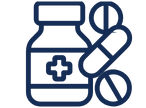In pharmaceutical operations, effective software compliance is vital for regulatory adherence, data security, and the integrity of patient-critical processes. Non-compliance can lead to serious consequences, from financial penalties to reputational damage.
By integrating these practices, you can turn compliance from a regulatory requirement into a powerful operational advantage.
This FAQ not only clarifies the what and why of compliance but also provides actionable insights to help you enhance efficiency, build trust, and stay aligned with evolving regulations.
Let’s dive into these critical questions to understand how you can make operational software compliance work as a value-adding asset for your organization.
Q1. Why is operational software compliance important?
Compliance is more than just a regulatory requirement; it’s a strategic tool for minimizing risks and maximizing system reliability.
Operational software compliance is essential for:
- Risk Management: Minimizes exposure to regulatory penalties and ensures smooth operations.
- Data Security: Protects against unauthorized access and data breaches.
- System Reliability: Validates that systems function consistently, reducing downtime.
- Streamlined Regulation: Simplifies adherence to regulatory frameworks.
- Trust: Builds credibility with clients, regulators, and partners.
Takeaway:
Establishing strong compliance practices enables you to protect your operations, reputation, and customers while maintaining high standards of quality and reliability.
Q2. What are the benefits of operational software compliance?
Effective compliance brings measurable benefits, from regulatory peace of mind to stronger stakeholder relationships.
Key benefits include:
- Regulatory Adherence: Ensures systems meet global regulatory standards.
- Data Security: Protects sensitive information through access controls.
- Operational Integrity: Provides reliable, high-quality results in regulated environments.
- Risk Reduction: Mitigates incidents that could lead to operational or financial setbacks.
- Stakeholder Trust: Reinforces commitment to compliance, earning confidence from partners and customers.
Takeaway:
Embracing software compliance as a best practice means not only avoiding penalties but also enhancing your brand’s reputation as a trustworthy, reliable partner.
Q3. How does 21 CFR Part 11 impact operational software compliance?
21 CFR Part 11 from the FDA sets essential standards for data integrity and electronic records, impacting how compliance is managed in the pharma industry.
Part 11’s requirements ensure:
- Electronic Record Reliability: Systems are validated to meet reliability standards equivalent to paper records.
- Access Control: Authorized access is regulated to protect data.
- Backup and Recovery: Backup plans are implemented to prevent data loss.
- Audit Trails: Detailed logs of actions ensure traceability and accountability.
Takeaway:
Implementing the controls mandated by 21 CFR Part 11 helps prevent compliance risks and supports efficient, secure data management practices across your organization.
Q4. What role does EU GMP Annex 11 play in operational software compliance?
Annex 11 sets guidelines that are essential for maintaining data integrity and validating computerized systems in the pharmaceutical sector.
Annex 11 focuses on:
- Data Integrity: Ensures data accuracy and accessibility.
- System Validation and Revalidation: Requires consistent validation for compliant operation.
- Backup and Restore Protocols: Maintains data safety and accessibility.
- CAPA Documentation: Tracks corrective actions for compliance.
- Batch Release Records: Verifies product quality before release.
Takeaway:
Following Annex 11 guidelines secures the reliability of your operational software, ensuring it consistently meets stringent pharma standards and contributes to quality control.
Q5. What are common challenges in achieving operational software compliance in CSV?
Compliance in Computer System Validation (CSV) presents unique challenges, especially in managing data integrity and adapting to regulatory shifts.
Challenges include:
- Regulatory Complexity: Adapting to evolving regulations requires resources and planning.
- Software Updates: Ensuring compliance after updates is time-consuming but necessary.
- Data Integrity: Maintaining accuracy across systems is crucial but challenging.
- System Integration: Combining multiple systems can complicate compliance.
- Documentation Management: Comprehensive documentation requires significant resources.
Takeaway:
A proactive approach to these challenges — through staff training, rigorous documentation, and effective system integration — can significantly reduce compliance risks.
Q6: What documentation is required to demonstrate operational software compliance?
Documentation is essential for regulatory audits and ensures compliance efforts are well-supported and traceable.
Critical documents include:
- Periodic Review Reports: Cover system performance, personnel access, and SOPs.
- Incident and Deviation Logs: Document system issues and corrective actions.
- Backup and Restore Documentation: Confirm data safety through regular tests.
- Audit Trail Logs: Provide a comprehensive record of all user interactions.
Takeaway:
Maintaining organized, up-to-date documentation is key to demonstrating compliance and ensuring readiness for regulatory reviews.
Q7: How to maintain compliance over the software’s lifecycle?
Achieving compliance is only the beginning; maintaining it requires ongoing effort and management.
Ongoing practices include:
- Continuous Monitoring: Regular checks to catch compliance issues early.
- Audits and Reviews: Frequent audits confirm alignment with regulatory standards.
- Change Control: Carefully document any software changes.
- Revalidation: Systems must be periodically revalidated to stay compliant.
- Regulatory Updates: Staying informed of regulatory changes is essential.
Takeaway:
Continuous lifecycle management ensures sustained compliance and minimizes the risk of lapses that could lead to regulatory penalties or operational disruptions.
Q8: How to handle changes to operational software while maintaining compliance?
Change management is crucial, as even minor system changes can impact compliance.
Key steps in managing changes include:
- Impact Assessment: Analyze potential effects on compliance and data integrity.
- Documentation: Update SOPs, training materials, and validation records.
- Revalidation: Verify that updates do not compromise compliance standards.
- Approval Process: Obtain necessary sign-offs to proceed safely.
Takeaway:
Implementing a robust change control process ensures that updates support compliance goals and mitigate the risk of unintended disruptions.
Q9: How to ensure data integrity in operational software?
Data integrity is foundational for compliant software operations, demanding strict controls to maintain accuracy and security.
Strategies for maintaining data integrity include:
- Access Controls: Limit data access to authorized users.
- Audit Trails: Track all data interactions for transparency.
- Encryption: Protect sensitive data during storage and transmission.
- Regular Backups: Safeguard against data loss.
- Validation: Periodic data checks confirm accuracy and reliability.
Takeaway:
A strong data integrity program enhances operational security and supports compliance with regulatory standards, contributing to a culture of accountability.
Q10: What training is necessary for personnel to ensure compliance?
Thorough training ensures personnel understand and can implement compliance protocols effectively.
Training should cover:
- Regulatory Knowledge: In-depth understanding of relevant regulations.
- SOPs and Policies: Familiarity with standard operating procedures.
- Software Usage: Competence in using and securing operational software.
- Change Control and Deviation Management: Handling changes and deviations with care.
Takeaway:
Consistent, comprehensive training programs empower your team to maintain compliance and minimize risks associated with human error.
Q11: How to integrate new technologies, like AI, into operational software while ensuring compliance?
New technologies like artificial intelligence (AI) offer significant advantages but can also introduce unique compliance challenges.
Integrating AI into operational software requires careful planning:
- Risk Assessment: Conduct thorough assessments to identify potential compliance risks associated with AI.
- Validation: Validate AI algorithms and processes to ensure they perform as intended without compromising compliance.
- Transparency: Maintain transparency in AI-driven decision-making processes to meet regulatory requirements.
- SOP and Training Updates: Regularly update standard operating procedures (SOPs) and training to reflect new technologies and ensure all team members understand compliance needs.
Takeaway:
Thoughtfully integrating AI can boost operational efficiency while maintaining compliance. For a deeper dive into digital health technologies, consult our QbD Group whitepaper on digital health and future opportunities.
Q12: What are the consequences of non-compliance with operational software requirements in the pharmaceutical industry?
Non-compliance can have significant, far-reaching impacts, affecting everything from regulatory status to brand reputation.
The consequences of non-compliance may include:
- Regulatory Fines: Non-compliance can lead to significant financial penalties from regulatory authorities.
- Product Recalls: If software non-compliance impacts product quality, costly recalls may be necessary.
- Legal Action: Companies may face legal repercussions, including lawsuits or loss of market approval.
- Reputational Damage: Non-compliance can harm a company’s reputation, impacting customer trust and stakeholder relationships.
Takeaway:
Avoiding non-compliance is essential to maintaining trust, operational stability, and market access. Strong compliance practices protect both the company’s interests and its reputation.
Q13: How do we leverage cloud-based solutions for operational software compliance in CSV?
Cloud-based solutions can enhance operational efficiency,but ensuring compliance when using cloud services requires diligent oversight.
Steps for compliant cloud-based operations include:
- Vendor Compliance: Ensure that the cloud provider adheres to relevant industry regulations, such as those governing data security and privacy.
- Risk Assessments: Conduct risk assessments to evaluate potential vulnerabilities associated with cloud data storage and processing.
- Data Security: Implement data encryption, access controls, and continuous monitoring to safeguard sensitive information.
- Documentation: Maintain comprehensive documentation of compliance activities to demonstrate adherence to regulations during audits.
Takeaway:
Cloud solutions offer scalability and flexibility, but ensuring compliance requires a proactive approach. Adopting these practices helps to leverage the benefits of cloud technology while minimizing compliance risks.
Conclusion
Operational software compliance is an indispensable part of pharmaceutical operations, supporting regulatory adherence, data integrity, and overall system reliability.
By addressing these essential questions, organizations can build robust compliance frameworks that drive efficiency and strengthen relationships with regulators, customers, and partners. Implementing these practices not only mitigates risks but also fosters a reputation of reliability and quality.
Want to elevate your compliance approach? QbD Group specializes in developing tailored solutions for the unique challenges in pharma.
Contact us today to discuss how we can support your compliance needs.







.png?width=109&height=108&name=Pharma%20(2).png)
.png?width=111&height=108&name=Medical%20Devices%20(2).png)
.png?width=84&height=107&name=IVD%20(2).png)



.png)



